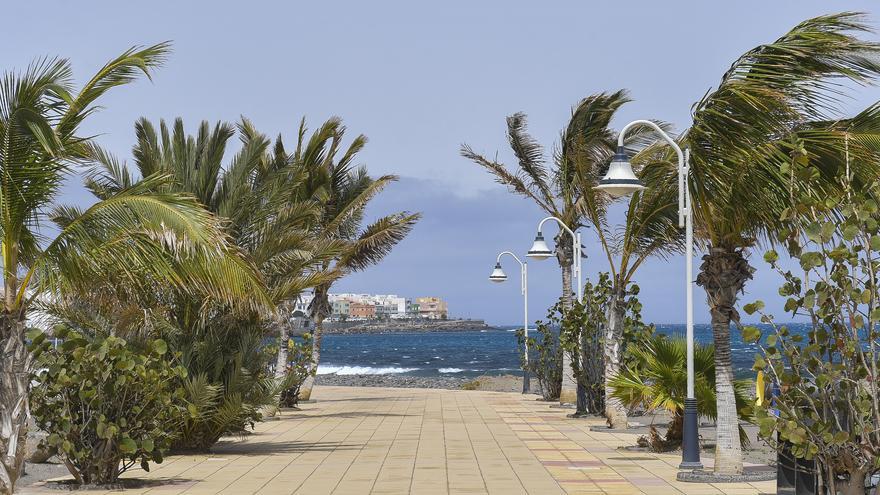
Yesterday, the thermometer at the meteorological station in Las Tirajanas surpassed the 40-degree mark and recorded the highest temperature in the archipelago in 2024. This year’s maximum could be matched over the weekend, as this Saturday and Sunday the yellow warning remains in place in the southern half of the islands of Gran Canaria and Tenerife.
Conversely, for the third consecutive day, a layer of fog descended in the early hours yesterday over Los Rodeos, in La Laguna, causing chaos in the activity of Tenerife Norte airport. The low visibility, coupled with light drizzle, led to flight delays throughout the morning.
Adverse meteorological conditions forced several planes to circle the airspace in the north of Tenerife for at least an hour, resulting in the cancellation of up to 31 flights (13 inter-island arrivals and 18 departures). It also led to the diversion of two other planes, one from Seville to Tenerife Sur and another departing from Gran Canaria but had to return to Gando.
The record for the highest temperature in this heatwave across the archipelago was reached at 2:00 p.m. at the Aemet station in Tunte, in the municipality of San Bartolomé de Tirajana, but these 40.5 degrees Celsius didn’t even make it into the highest readings in Spain, as ten towns in the province of Malaga registered temperatures above, with Estepona topping the list at 42.7 degrees.
In Canarias, the highest wind gust in the entire country was recorded, 96 kilometers per hour in La Aldea. This western Gran Canaria station was also the one that recorded the highest temperature in the mid-April heatwave, hitting 38.5 degrees.
Aemet’s forecast for this Saturday includes cloudy intervals in the low-lying areas of the northernmost islands, with predominantly overcast skies during the morning. In other areas, it will be mostly clear with a light haze at higher altitudes.
Temperatures will experience little change on the coasts, with slight to moderate increases, especially in the higher and inland areas. Temperatures of 30-32 degrees Celsius or higher will be reached in southern-facing inland areas, with less likelihood in the westernmost islands. In inland areas on the southern slopes of Gran Canaria and Tenerife, temperatures will reach 36 and 35 degrees, respectively, with nighttime temperatures locally reaching up to 25 degrees.
The wind will be moderate to strong from the northeast with possible very strong gusts in southeast and northwest slopes, a critical scenario in the event of fires in the mountains. In response to this situation, a forest fire alert has been declared and the Canary Islands Government’s Health Department has extended the health risk alerts due to high temperatures in the municipalities of Santa Lucía de Tirajana, San Bartolomé de Tirajana, and Tejeda until July 16, and has issued an orange alert in the Tenerife municipality of Vilaflor from the 13th to the 15th of July.
For the assignment of risk levels, an algorithm has been established that includes the forecasted maximum temperatures, threshold temperatures, and risk factors for the 13 “meteosalud” areas created in the Canary Islands for monitoring temperatures.
The areas affected by the warm-up are municipalities belonging to the South, East, and West zones of Gran Canaria (34 degrees) and the Summit zone of Gran Canaria (33 degrees). In the case of the warning on the island of Tenerife, it corresponds to the South, East, and West zones (34 degrees).
















